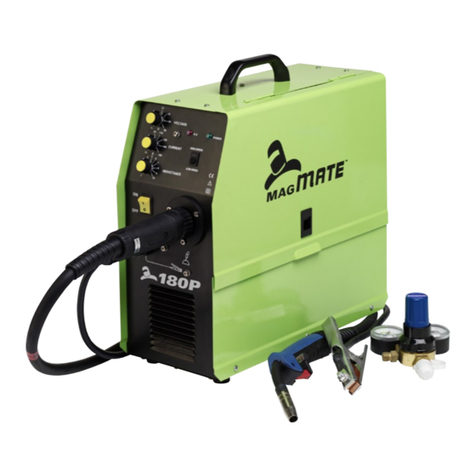
6
Cylinder Safety
1Cylinder valve hand-wheel
2Back-plug
3Bursting disc
Back view of typical cylinder valve
1
2
3
Operator wearing personal
protective equipment (PPE)
in safe position
Ten Points about Cylinder Safety
1Always read the labels and Safety Data Sheet
(SDS) before use.
2Store cylinders upright and use in
well-ventilated, secure areas away from
pedestrian or vehicle thoroughfares.
3Ensure cylinders are appropriately secured
and guarded against being knocked violently
or being allowed to fall.
4Wear safety shoes, glasses and gloves when
handling, connecting and using cylinders.
5Ensure cylinders are appropriately restrained
to mechanical lifting/handling devices prior
to movement.
6Keepinacool,well-ventilatedarea,away
from heat sources, sources of ignition and
combustible materials, especially flammable
gases.
7Keepfullandemptycylindersseparate.
8Keepammonia-basedleakdetection
solutions, oil and grease away from cylinders
and valves.
9Never use force when opening or closing
valves.
10 Never repaint or disguise markings and
damage on cylinders. If damaged, return
cylinders to BOC immediately.
Cylinder Valve Safety
When working with cylinders or operating
cylinder valves, ensure that you wear
appropriate protective clothing – gloves, boots
and safety glasses.
Ensure cylinder value is closed before moving
or disconnecting equipment.
Before operating a cylinder valve:
•Ensurethatthesystemyouareconnecting
the cylinder into is suitable for the gas and
pressure involved.
•Cylindervalvesshouldnotbeopenunlessa
pressure regulator has been fitted.
•Ensurethatanyaccessories(suchashoses
attached to the cylinder valve, or the system
being connected to) are securely connected.
A hose, for example, can potentially flail
around dangerously if it is accidentally
pressurised when not restrained at both ends.
•Standtothesideofthecylindersothat
neither you nor anyone else is in line with the
back of the cylinder valve. This is in case a
back-plug is loose or a bursting disc vents. The
correct stance is shown in the diagram above.
When operating the cylinder valve:
•Openitbyhandbyturningthevalvehand-wheel
anti-clockwise. Use only reasonable force.
•Ensurethatnogasisleakingfromthecylinder
valve connection or the system to which the
cylinder is connected. DO NOT use ammonia-
based leak detection fluid as this can damage






























